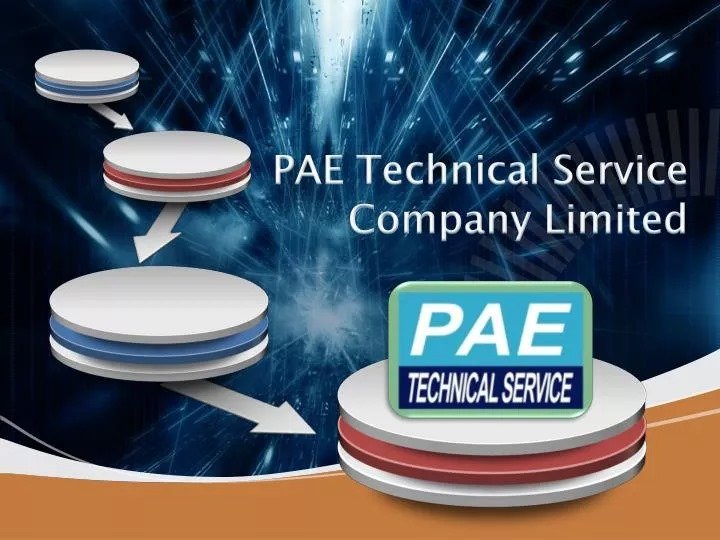You’ve got an old server tucked away in a closet, faithfully running your business’s inventory system. It’s a 32-bit machine, capped at 4GB of RAM just not enough for today’s demands. Enter PAE Technology a slick workaround that pumps up that limit without forcing you to buy new gear. Even now, in a world obsessed with 64-bit systems, Physical Address Extension keeps old tech alive. Why should you care? Because legacy systems aren’t going anywhere fast, and PAE is their secret weapon.
Let’s dive deep into what PAE Technology is, how it ticks, and why it’s still worth a look in 2025.
Why PAE Technology Still Matters in a 64-Bit World
Flip open a modern laptop, and you’ll find a 64-bit processor handling memory like it is no big deal. So why bother with PAE Technology, a trick born in the 32-bit era? Simple: Not every system has upgraded. Small businesses, hospitals, and even hobbyists still lean on aging hardware think servers from 2005 or quirky embedded devices.
Physical Address Extension stretches a 32-bit CPU’s addressable memory from a puny 4GB to a hefty 64GB. That’s a lifeline for machines too stubborn to retire.
A 2023 TechRepublic survey found 15% of small firms still run pre-2010 hardware for critical tasks. PAE keeps those relics chugging along. Intrigued? Let’s peel back the layers.
What Exactly Is PAE Technology?

PAE Technology, or Physical Address Extension, is a processor feature that lets a 32-bit CPU punch above its weight. Normally, a 32-bit processor tops out at 4GB of addressable memory fine for 1990s gaming, but laughable for modern apps. PAE boosts that to 36 bits, unlocking up to 64GB of RAM. It’s a memory expansion hack that keeps old systems relevant.
How does it work? It fiddles with memory management, letting the CPU map more physical RAM than its default setup allows. Imagine upgrading your car’s engine without buying a new ride. Introduced by Intel, this 32-bit enhancement became a go-to for systems craving advanced memory without a full overhaul.
The Roots: A Brief History of PAE
Let’s hop in a time machine to 1995. Intel drops the Pentium Pro, and with it, PAE Technology hits the scene. Back then, 32-bit processors were king—Windows 95 was the hot new thing, and 4GB of RAM seemed like plenty. But software evolved fast. Databases, servers, and early multitasking apps started gobbling up memory, exposing CPU limitations.
Physical Address Extension stepped in as a fix. By the early 2000s, operating systems caught on. Windows XP and Server 2003 baked in PAE support, while Linux rolled out PAE kernel options. Fun fact: Microsoft tied PAE to security features like Data Execution Prevention (DEP) in 2004, making it a must-have for some setups. It wasn’t sexy, but it worked.
How PAE Pulls It Off: The Tech Under the Hood
So what’s the secret sauce behind PAE Technology? It’s all about memory addressing. A standard 32-bit CPU uses a two-level page table system to link virtual memory to physical RAM. PAE throws in a third level, bumping the address space from 32 bits to 36 bits.

Without PAE, your system’s a small-town post office with 4 billion mailboxes. PAE builds a bigger hub, handling 64 billion. The CPU leans on its page directory and memory paging tricks to translate those extra bits into real RAM access. It’s not plug-and-play—your processor needs PAE support (like Intel’s NX bit)—but it’s genius CPU architecture at work.
- Before PAE: 2^32 addresses = 4GB max.
- With PAE: 2^36 addresses = 64GB max.
The Payoff: Core Benefits of PAE Technology
Why mess with Physical Address Extension? The perks make it crystal clear.
- More Memory, No Overhaul: Access up to 64GB on a 32-bit processor. No need to junk your system for 64-bit.
- Cost-Effective Upgrade: Small shops and tinkerers save big by boosting old hardware.
- Server Sweet Spot: Legacy servers like a Windows Server 2003 box get a memory expansion shot in the arm.
A 2010 Gartner study pegged PAE as cutting hardware upgrade costs by 30% for firms sticking with 32-bit setups. That’s system efficiency in spades maxing out RAM utilization without draining your wallet.
Where It Shines: Real-World Applications
PAE Technology isn’t just geek trivia it is out there doing work. Where? Legacy systems and niche corners.
- Old Servers: Picture a retail chain running inventory on a 2005 Dell PowerEdge. PAE bumps it to 8GB of RAM, keeping it alive.
- Embedded Systems: Industrial controllers or ATMs on 32-bit CPUs lean on extended memory to handle modern loads.
- Case Study: In 2022, a UK hospital kept radiology machines running with PAE, dodging a $200,000 upgrade bill.
These are not pie-in-the-sky examples. PAE’s computing enhancement keeps critical systems humming where 64-bit isn’t an option.
The Catch: Limitations You Can’t Ignore
PAE Technology isn’t flawless. Here’s the dirt on its downsides.
- Compatibility Issues: Some 32-bit apps refuse to play ball with PAE. They’re blind to RAM beyond 4GB, even on a PAE-enabled OS. Drivers can also choke—Windows XP once axed PAE support for certain graphics cards.
- Performance Overheads: That extra page table layer adds a smidge of system latency. A 2018 Linux kernel test clocked a 5-10% dip in processing speed.
- Ceiling Still Exists: Sure, 64GB is big, but each process stays capped at 4GB of virtual memory. Compare that to 64-bit’s sky-high limits.
It’s a balancing act: memory optimization with a pinch of efficiency loss.
How to Enable and Use PAE Technology
Want to fire up PAE Technology? It’s not automatic you’ll need to tweak some settings. Here’s the rundown, split by operating systems.
Windows Walkthrough
For classics like Windows XP or Server 2003:
- Dig up the boot.ini file (hidden in C:).
- Toss in the /PAE switch—like multi(0)disk(0)rdisk(0)partition(1)\WINDOWS=”Windows Server 2003″ /PAE.
- Reboot. Boom, you’re in.
On Windows 7 32-bit, PAE often kicks in automatically if your CPU supports it. Check with systeminfo in Command Prompt—look for “PAE Enabled.”
Linux Lowdown
Linux takes a bit more elbow grease:
- Grab a PAE kernel—like linux-image-pae on Debian systems.
- Refresh your bootloader with sudo update-grub.
- Confirm it worked: uname -r. Spot “pae” in the kernel name? You’re set.
Pro Tip: Test CPU support with cat /proc/cpuinfo | grep pae. No “pae” flag? Tough luck—your hardware’s a no-go.
PAE vs. The Alternatives: A Showdown
How does PAE Technology measure up? Let’s throw it in the ring with its rivals.
PAE vs. x64
- PAE: A 36-bit workaround on a 32-bit CPU. Tops out at 64GB, with slight performance overheads.
- x64: Native 64-bit power. Handles terabytes of RAM, no sweat.
- Verdict? x64 wins for modern rigs, but PAE shines for legacy system compatibility.
PAE vs. AWE
- AWE (Address Windowing Extensions): Lets one app “borrow” RAM past 4GB at a time.
- PAE: System-wide memory expansion. Every app gets the boost.
- Edge: PAE’s broader RAM management.
The Future: Is PAE Still Relevant?
By March 23, 2025, PAE Technology feels like a vintage tool handy in a pinch but fading. Most new systems are 64-bit, and memory management has leaped forward. Still, PAE hangs on in Linux systems and retro setups. Virtualization gives it a niche think firing up a PAE-enabled VM on old iron.
The numbers tell a story: A 2024 Red Hat report pegged 32-bit system use at under 5% in big firms. Yet hobbyists and cash-strapped outfits still tap extended memory tricks. Could PAE evolve? Maybe in lean IoT gadgets craving system efficiency. Don’t hold your breath, though 64-bit’s grip is too tight.
Frequently Asked Questions About PAE Technology
Does My Computer Need PAE Technology?
If you’re rocking a 32-bit CPU with more than 4GB of RAM, yes—it’s your ticket to using that extra addressable memory. Modern 64-bit systems? Skip it; they’ve got memory expansion baked in.
Will PAE Slow Down My System?
A bit. The extra page table layer adds performance overheads—think 5-10% slower data processing, per Linux benchmarks. Worth it for the RAM utilization boost? You decide.
Why Doesn’t My App See All the RAM with PAE?
Blame compatibility issues. Some 32-bit apps can’t handle extended memory—they’re stuck at 4GB per process, even on a PAE kernel. It’s a software limitation, not PAE’s fault.
Is PAE Still Useful in 2025?
For legacy setups, absolutely. Old servers and embedded gizmos lean to Physical Address Extension for system efficiency. New systems? Not so much—64-bit rules the roost.
Wrap-Up: PAE’s Place in the Tech Story
PAE Technology is a tale of clever engineering—stretching 32-bit CPU limits with Physical Address Extension. It’s not the future’s star, but it’s no has-been either. For legacy servers, embedded devices, or that dusty PC you’ve been meaning to fix, PAE delivers memory optimization on a dime. Got an old rig? Peek into its CPU architecture. PAE might just be your unsung hero.



Pingback: What Is QaaS Technology? Your Ultimate Guide
Pingback: Is Information Technology A Good Career? Your Guide To A Thriving IT Future
Pingback: What Is Demand Flow Technology? Your Ultimate Guide To Smarter Manufacturing In 2025